NASA and Boeing are taking another major step on the path to regular human spaceflight launches to the International Space Station on American rockets and spacecraft from American soil with the second uncrewed flight test of Boeing’s CST-100 Starliner as part of the agency’s Commercial Crew Program.
NASA’s Boeing Orbital Flight Test-2 (OFT-2) is targeting launch of the Starliner spacecraft on a United Launch Alliance Atlas V rocket at 1:20 p.m. EDT Tuesday, August 3, from Space Launch Complex-41 on Cape Canaveral Space Force Station in Florida. Starliner is expected to arrive at the space station for docking about 24 hours later with more than 400 pounds of NASA cargo and crew supplies.
The mission will test the end-to-end capabilities of Starliner from launch to docking, atmospheric re-entry, and a desert landing in the western United States. OFT-2 will provide valuable data that will help NASA certify Boeing’s crew transportation system to carry astronauts to and from the space station.
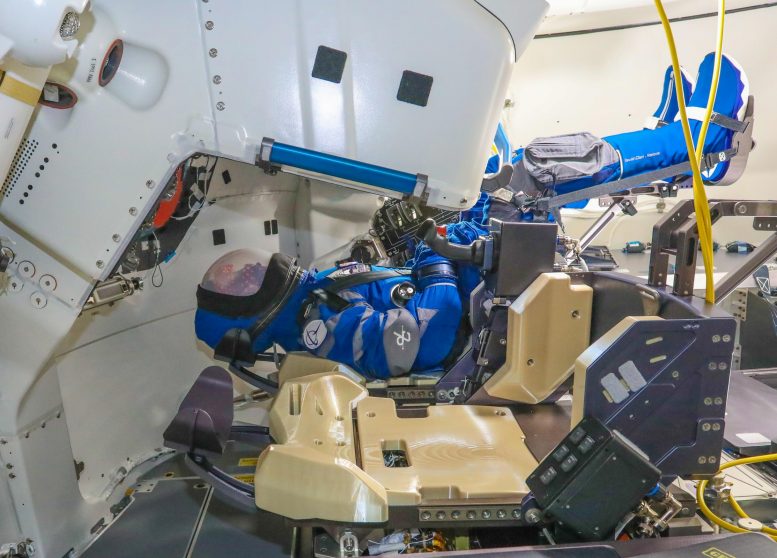
Rosie the Rocketeer, Boeing’s anthropometric test device, claimed her spot once again in the commander’s seat inside the company’s CST-100 Starliner spacecraft for its second uncrewed Orbital Flight Test (OFT-2) for NASA’s Commercial Crew Program. Credit: Boeing
Though no crew will be onboard the spacecraft for OFT-2, the Starliner commander’s seat will be occupied by Rosie the Rocketeer, the Boeing’s anthropometric test device.
During OFT-1, Rosie was outfitted with 15 sensors to collect data on what astronauts will experience during flights on Starliner. For OFT-2, spacecraft data capture ports previously connected to Rosie’s 15 sensors will be used to collect data from sensors placed along the seat pallet, which is the infrastructure that holds all the crew seats in place.
During Starliner’s approach to the space station, NASA and Boeing will verify data links and command capabilities by the station crew, including a commanded hold during approach by Japan Aerospace Exploration Agency astronaut and station commander Aki Hoshide. Starliner also will test an automated retreat capability during approach in the event an issue should occur on the docking axis.
Starliner also will test its vision-based navigation system to autonomously dock with the space station. Docking is scheduled for 1:37 p.m. Wednesday, August 4, or about 24 hours after launch.
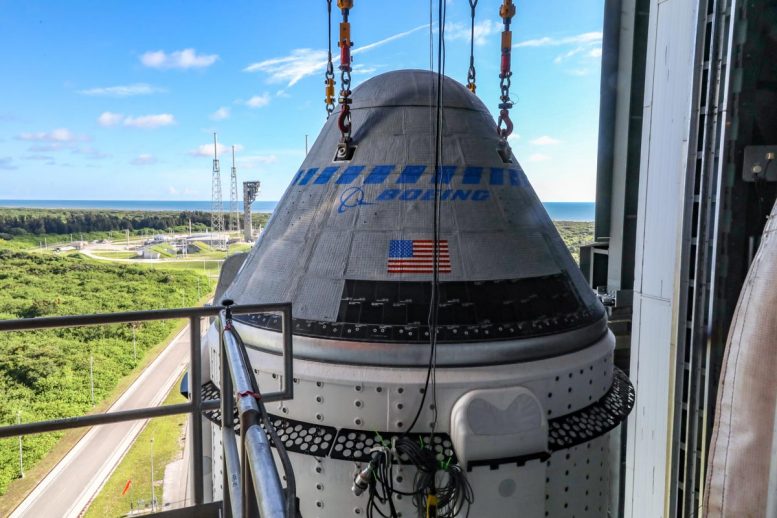
The Boeing CST-100 Starliner spacecraft is secured atop a United Launch Alliance Atlas V rocket at the Vertical Integration Facility at Space Launch Complex 41 at Cape Canaveral Space Force Station in Florida on July 17, 2021. Starliner will launch on the Atlas V for Boeing’s second Orbital Flight Test (OFT-2) for NASA’s Commercial Crew Program. The spacecraft rolled out from Boeing’s Commercial Crew and Cargo Processing Facility at NASA’s Kennedy Space Center earlier in the day. Credit: Boeing/John Grant
After a successful docking, Starliner will spend five to 10 days aboard the orbiting laboratory before returning to Earth in the western United States. The spacecraft will return with more than 550 pounds of cargo, including reusable Nitrogen Oxygen Recharge System (NORS) tanks that provide breathable air to station crew members.
OFT-2 is the second orbital flight for the CST-100 Starliner, and the first for the second crew module in the Starliner fleet. Boeing is flying this second orbital test to prove the Starliner system meets NASA’s requirements, including docking to the space station.
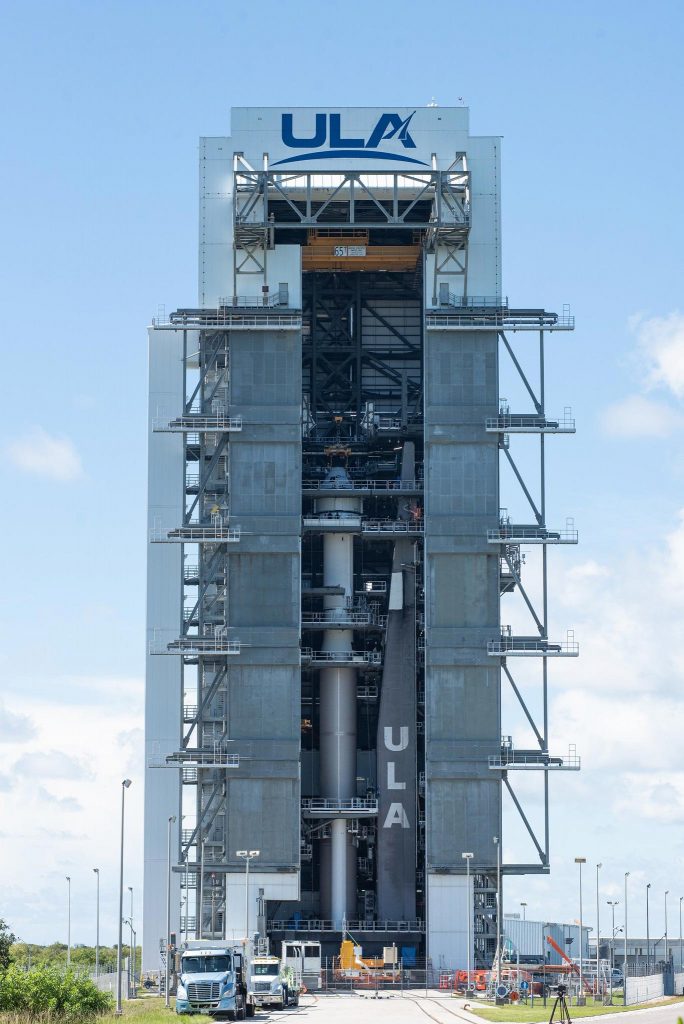
Boeing’s CST-100 Starliner spacecraft is secured atop a United Launch Alliance Atlas V rocket at the Vertical Integration Facility at Space Launch Complex-41 at Florida’s Cape Canaveral Space Force Station on July 17, 2021. Credit: Boeing/Damon Tucci
OFT-2 will build on the mission objectives achieved during Starliner’s flight test, including verifying:
- In-orbit operation of the avionics, docking system, communications and telemetry systems, environmental control systems, solar arrays and electrical power systems and propulsion systems;
- Performance of the guidance, navigation & control systems of the Starliner and Atlas V through ascent, on-orbit, and entry;
- Acoustic and vibration levels, and loads across the Starliner exterior and interior
- Launch escape trigger monitoring
- Performance of the Starliner system end-to-end mission operations
The OFT-2 mission also will test the changes and improvements made to Starliner, and prove the system is ready to fly astronauts.
In preparation for OFT-2, NASA and Boeing completed all actions recommended by the joint NASA-Boeing Independent Review Team, which was formed as a result of Starliner’s first test flight in December 2019. The review team’s recommendations included items relating to integrated testing and simulation, processes and operations, software, the crew module communication system, and organization. Boeing implemented all recommendations, including those that were not mandatory, ahead of Starliner’s upcoming flight.
As long as Starliner’s second uncrewed mission meets all necessary objectives, NASA and Boeing will look for opportunities toward the end of this year to fly Starliner’s first crewed mission to the space station, the Crew Flight Test (CFT), with NASA astronauts Barry “Butch” Wilmore, Nicole Mann, and Mike Fincke on board.
NASA’s Commercial Crew Program is delivering on its goal of safe, reliable, and cost-effective transportation to and from the International Space Station from the United States through partnership with American private industry.
This partnership is changing human spaceflight history by opening access to low-Earth orbit and the International Space Station to more people, more science, and more commercial opportunities. The space station remains the springboard to NASA’s next great leap in space exploration, including future missions to the Moon and, eventually, to Mars.
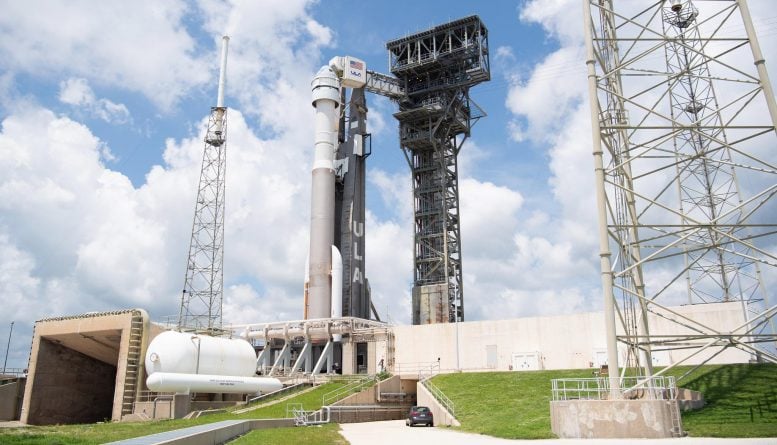
A United Launch Alliance Atlas V rocket with Boeing’s CST-100 Starliner spacecraft onboard is seen on the launch pad at Space Launch Complex 41. Credit: NASA/Joel Kowsky
NASA will provide coverage of the upcoming prelaunch, launch, and docking activities for the agency’s Boeing Orbital Flight Test-2 (OFT-2) mission to the International Space Station. OFT-2 is the second uncrewed flight for Boeing’s CST-100 Starliner spacecraft as part of the agency’s Commercial Crew Program. The mission is targeted to launch at 1:20 p.m. EDT Tuesday, August 3
Starliner will launch on a United Launch Alliance Atlas V rocket from Space Launch Complex-41 at Cape Canaveral Space Force Station in Florida. About 30 minutes after launch, Starliner will perform its orbital insertion burn to begin its daylong trip to the space station. The spacecraft is scheduled to dock to the space station at 1:37 p.m. Wednesday, August 4. Launch and docking coverage will air live on NASA Television, the NASA app, and the agency’s website.
The spacecraft will carry more than 400 pounds of NASA cargo and crew supplies to the space station. It will return to Earth with more than 550 pounds of cargo, including the reusable Nitrogen Oxygen Recharge System tanks that provide breathable air to station crew members.
OFT-2 will demonstrate the end-to-end capabilities of the Starliner spacecraft and Atlas V rocket, from launch, to docking, to a return to Earth with a desert landing in the western United States. The uncrewed mission will provide valuable data toward NASA certifying Boeing’s crew transportation system for regular flights to and from the space station.
NASA has updated its coronavirus (COVID-19) policies to remain consistent with new Centers for Disease Control and Prevention (CDC) guidance. Credentialed media will receive additional details from the media operations team at NASA’s Kennedy Space Center in Florida.
NASA’s Boeing OFT-2 mission coverage is as follows (all times Eastern):
Tuesday, August 3
- 12:30 p.m. – NASA TV launch coverage begins for a targeted 1:20 p.m. liftoff. NASA TV will have continuous coverage through Starliner orbital insertion.
- 3:30 p.m. (approximately) – Postlaunch news conference on NASA TV. Participants will include:
- Steve Stich, manager, NASA’s Commercial Crew Program.
- TBD, NASA’s International Space Station Program.
- John Vollmer, vice president and program manager, Boeing Commercial Crew Program.
- John Elbon, chief operating officer, United Launch Alliance.
Wednesday, August 4
- 10:30 a.m. – NASA TV rendezvous and docking coverage begins.
- 1:37 p.m. (scheduled) – Docking
Thursday, August 5
- 8:30 a.m. – NASA TV hatch opening coverage begins
- 8:40 a.m. – Hatch opening
- 9:40 a.m. (approximately) –Welcoming remarks
NASA TV Launch Coverage
NASA TV live coverage will begin at 12:30 p.m. For NASA TV downlink information, schedules, and links to streaming video, visit:
Audio only of the news conferences and launch coverage will be carried on the NASA “V” circuits, which may be accessed by dialing 321-867-1220, -1240, -1260 or -7135. On launch day, “mission audio,” countdown activities without NASA TV launch commentary, will be carried on 321-867-7135.
On launch day, a “clean feed” of the launch without NASA TV commentary will be carried on the NASA TV media channel. Launch also will be available on local amateur VHF radio frequency 146.940 MHz and UHF radio frequency 444.925 MHz, heard within Brevard County on the Space Coast.
NASA Website Launch Coverage
Launch day coverage of NASA’s Boeing OFT-2 mission will be available on the agency’s website. Coverage will include livestreaming and blog updates beginning no earlier than 12:30 p.m. Wednesday, August 3, as the countdown milestones occur. On-demand streaming video and photos of the launch will be available shortly after liftoff. For questions about countdown coverage, contact the Kennedy newsroom at: 321-867-2468. Follow countdown coverage on our launch blog at:
Public Participation
NASA invites the public to take part in virtual activities and events ahead of OFT-2.
Members of the public can register to attend the launch virtually. NASA’s virtual guest program for OFT-2 includes curated launch resources, notifications about NASA social interactions, and the opportunity for a virtual launch passport stamp following a successful launch. Print, fold, and get ready to fill your virtual guest launch passport.
Engage kids and students in virtual and hands-on activities that are both family-friendly and educational through Next Gen STEM Commercial Crew.
Watch and Engage on Social Media
Stay connected with the mission on social media via Twitter, Facebook, and Instagram using the hashtag #LaunchAmerica. Follow and tag these accounts:
Twitter: @NASA, @Commercial_Crew, @Space_Station, @NASAKennedy
Facebook: NASA, NASACommercialCrew, ISS Facebook, Kennedy Space Center
Instagram: NASA, ISS Instagram, NASAKennedy
NASA will provide a live video feed of Space Launch Complex-41 approximately 6 hours prior to the planned liftoff of the OFT-2 mission. Pending unlikely technical issues, the feed will be uninterrupted until the prelaunch broadcast begins on NASA TV, approximately one hour prior to launch.
Once the feed is live, it will be available at:
http://youtube.com/kscnewsroom
Make sure to check out NASA en español on Twitter, Instagram, Facebook, and YouTube for more Spanish-language coverage on OFT-2.

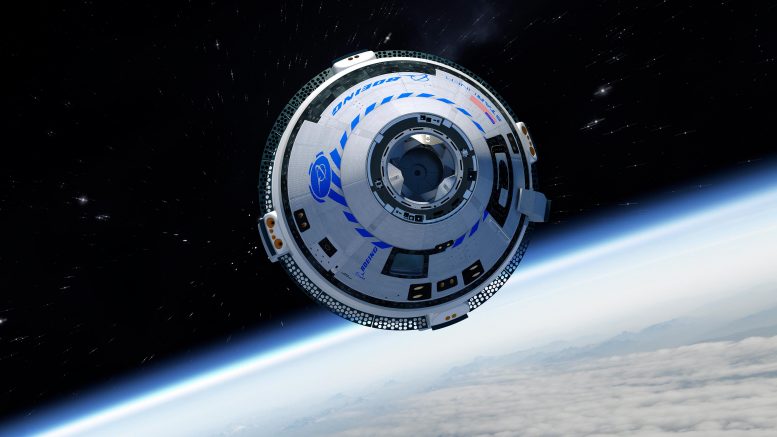

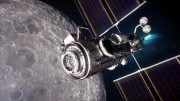



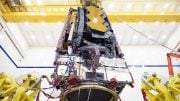
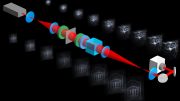

Be the first to comment on "What You Need To Know About NASA’s Boeing Starliner Spacecraft Launch + How To Watch It Live"